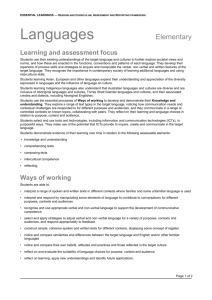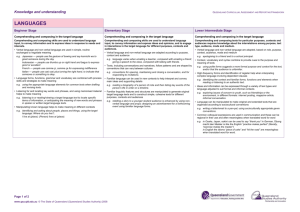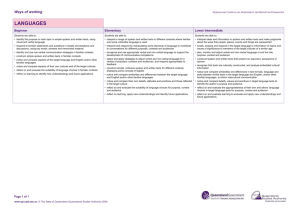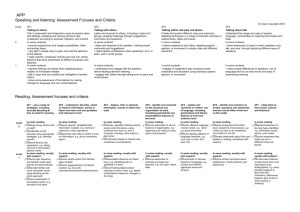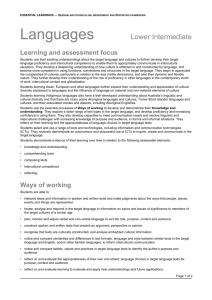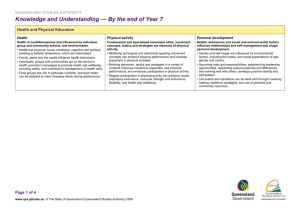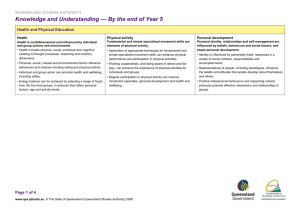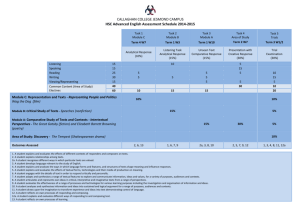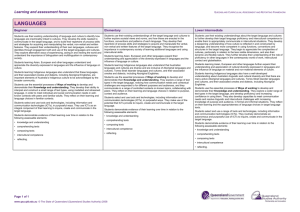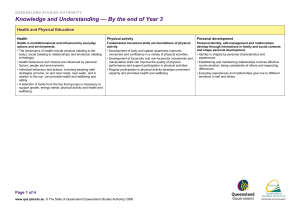Languages - Queensland Curriculum and Assessment Authority
advertisement
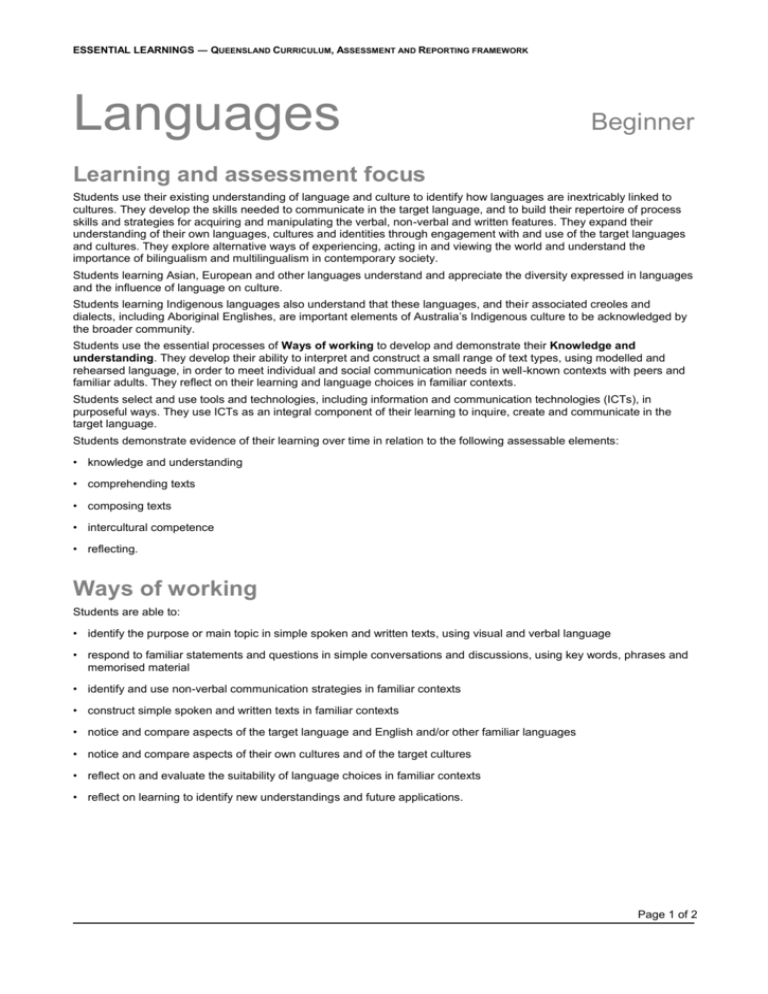
ESSENTIAL LEARNINGS ― QUEENSLAND CURRICULUM, ASSESSMENT AND REPORTING FRAMEWORK Languages Beginner Learning and assessment focus Students use their existing understanding of language and culture to identify how languages are inextricably linked to cultures. They develop the skills needed to communicate in the target language, and to build their repertoire of process skills and strategies for acquiring and manipulating the verbal, non-verbal and written features. They expand their understanding of their own languages, cultures and identities through engagement with and use of the target languages and cultures. They explore alternative ways of experiencing, acting in and viewing the world and understand the importance of bilingualism and multilingualism in contemporary society. Students learning Asian, European and other languages understand and appreciate the diversity expressed in languages and the influence of language on culture. Students learning Indigenous languages also understand that these languages, and their associated creoles and dialects, including Aboriginal Englishes, are important elements of Australia’s Indigenous culture to be acknowledged by the broader community. Students use the essential processes of Ways of working to develop and demonstrate their Knowledge and understanding. They develop their ability to interpret and construct a small range of text types, using modelled and rehearsed language, in order to meet individual and social communication needs in well-known contexts with peers and familiar adults. They reflect on their learning and language choices in familiar contexts. Students select and use tools and technologies, including information and communication technologies (ICTs), in purposeful ways. They use ICTs as an integral component of their learning to inquire, create and communicate in the target language. Students demonstrate evidence of their learning over time in relation to the following assessable elements: • knowledge and understanding • comprehending texts • composing texts • intercultural competence • reflecting. Ways of working Students are able to: • identify the purpose or main topic in simple spoken and written texts, using visual and verbal language • respond to familiar statements and questions in simple conversations and discussions, using key words, phrases and memorised material • identify and use non-verbal communication strategies in familiar contexts • construct simple spoken and written texts in familiar contexts • notice and compare aspects of the target language and English and/or other familiar languages • notice and compare aspects of their own cultures and of the target cultures • reflect on and evaluate the suitability of language choices in familiar contexts • reflect on learning to identify new understandings and future applications. Page 1 of 2 ESSENTIAL LEARNINGS ― QUEENSLAND CURRICULUM, ASSESSMENT AND REPORTING FRAMEWORK Knowledge and understanding Comprehending and composing in the target language Comprehending and composing skills are used to understand language input, to convey information and to express ideas in response to needs and interests. • Verbal language and non-verbal language are used in simple, routine exchanges to negotiate meaning e.g. Japanese — people use the gesture of bowing and say konnichi wa to greet someone during the day Indonesian — people use thumbs up on right hand and bagus to express good or excellent French — people use comme çi, comme ça for expressing indifference Italian — people use cosi cosi plus turning the right hand, to indicate that someone or something is okay. • Language forms, functions, grammar and vocabulary are combined with process skills and strategies to make meaning e.g. using the appropriate language elements for common texts when drafting and revising texts. • Listening for and locating key words and phrases, and using memorised material helps to make meaning e.g. listening to or reading/viewing a target language text to locate specific items of information, or anticipating the meaning of new words and phrases in spoken or written target language texts. • Manipulating known language helps to make meaning in different contexts e.g. identifying and asking about people, places and things, using the target language: Where do you live?; I live at (place); (Person) lives at (place). Intercultural competence and language awareness Noticing and comparing similarities and differences between languages and cultures informs intercultural communication. • Learning languages provides insights into one’s own languages and the target language, and how concepts are expressed across languages e.g. the French habiter (to live) is reflected in the word “habitat” in English English has only one form of the word “you”, while French has more than one: tu for immediate family and peers, and vous for adults who are not your immediate family, reflecting levels of familiarity and status German numbers are said in reverse: 23 is dreiundzwanzig Indonesian plurals are indicated by saying the word twice Japanese numbers have literal meaning: 13 is ten-three, juu san. • Ways of using language provide information about cultures e.g. different forms of address show relative positions in a society, and degrees of relationship in a culture: Aboriginal family relationships are defined by specific kinship lores and terms, such as the use of “Aunty” and “Uncle” for elders. • Languages and cultural practices have particular features, conventions, patterns and practices that may be similar to or different from one’s own language and culture e.g. word choice, level of politeness and gesture vary when greeting a friend, compared with greeting a teacher, and there may be variations in language associated with gender: — in French, le professeur (masculine form) refers to both male and female teachers — in German, nouns to describe jobs change according to gender: der Lehrer is “male teacher” and die Lehrerin is “female teacher”. Page 2 of 2
